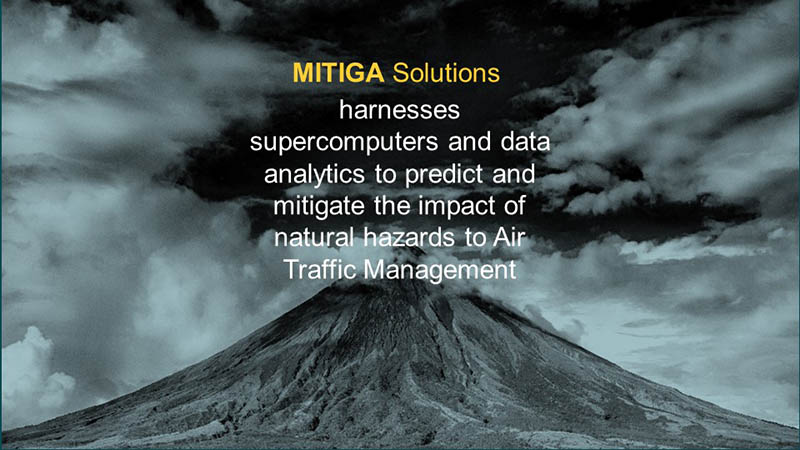
About 90% of the most in-demand flights travel over high-risk volcanic areas. On average, ash-forming eruptions cost more than $500 million in losses per year to airlines, and eventually billions of dollars to related aviation stakeholders (engine manufacturers, insurance, service providers). Atmospheric dispersion of hazardous substances influences many economic markets and poses a variety of problems to different segments of the aviation industry. In the last decade, regulation frameworks for air navigation changed to allow airlines to decide whether to operate under volcanic ash contaminated airspace and the European Aviation Safety Agency (EASA) has required engine manufacturers to certify engine susceptibility to volcanic ash and other hazardous pollutants. In this context, a gap exists between available information on dispersion of hazardous substances and industry needs at operational level, creating a market opportunity. Aeronautics is one of the EU’s key high-tech sectors in the global market. It generates around €220 billion, providing 4.5 million direct and indirect jobs. The European Union is a world leader in aerospace products and aeronautical technologies are catalysts for innovation contributing to the growth of the EU economy as a whole.
MITIGA Solutions is a spin-off of the Barcelona Supercomputing Center (BSC), the national supercomputing facility in Spain, the coordinator of the ChEESE CoE, and a world-renowned institution with extensive experience in developing and implementing supercomputer models in the fields of geophysics, volcanology and atmospheric impacts.
MITIGA has developed an Impact Calculation Engine (ICE), that is being used in an in-house operational high performance computing (HPC) software. It is capable of providing customer-based commercial solutions for air traffic management (ATM) during hazardous scenarios caused by the presence of volcanic ash and other aerosols in the atmosphere.
Inside of ChEESE CoE, there are different defined pilot demonstrators (PD) and codes that are related to volcanic ash clouds dispersion. Some of them may have a direct impact on MITIGA’s services quality:
- Enhanced ash dispersion model. Fall3D is a well-established, ash-dispersion model developed in-house at BSC for the last 15 years. V8 of Fall3D was developed from ChEESE CoE and is now being integrated as an open source model into daily operations in MITIGA. The new model is faster, more scalable and more precise than V7 and will enable a better service for ATM customers.
- Enhanced volcanic ash plume modelization. Besides the meteorological conditions, to properly model the actual eruption plume is of fundamental value for a proper dispersion modeling of an actual ash cloud. PD3 in ChEESE is devoted to coupling both ASHEE plume modeler with Fall3D. The goal is to produce better input parameters to Fall3D by properly modeling the ash plume with ASHEE. If the turnaround time for such a coupling is small enough, another step towards better ash dispersal simulations may be done in MITIGA’s operations and services for ATM.
- High-resolution volcanic ash dispersal. PD12 in ChEESE is devoted to increase the resolution of the ash dispersal modeling by means of an ensemble-based data assimilation system. Such system will combine an Ensemble Transform Kalman Filter (ETKF) and the Fall3D ash dispersal model. The resulting models should improve the resolution of current operational models up to one order of magnitude. Yet again, this may positively impact MITIGA services for ATM.
- Probabilistic volcanic hazard assessment (PVHA). On one hand, among MITIGA activities there are some related to the insurance sector and the effect of volcanic eruptions on it. Currently, MITIGA is working on a Cat-Bond product for the international Red Cross. This product is partially based on a Population and Habitat Viability Assessment (PVHA) task. On the other hand, PD6 in ChEESE is devoted to PVHA and some synergies may arise from it as it is more general than what is currently being done at MITIGA.
